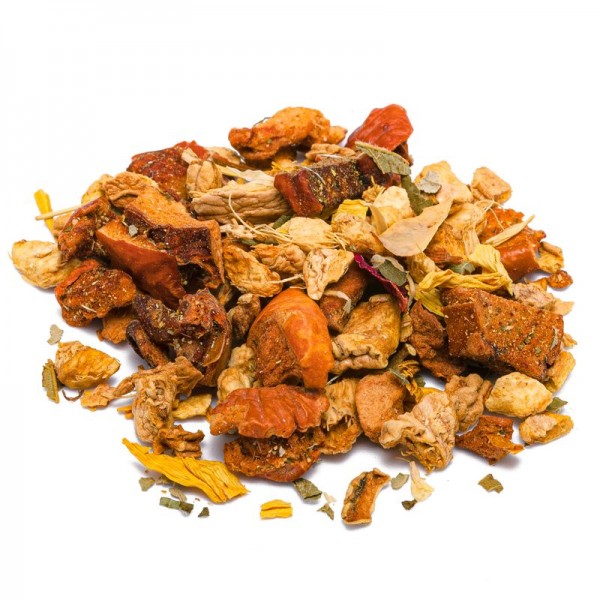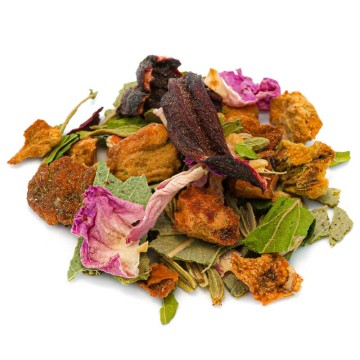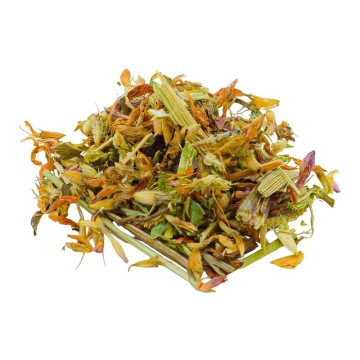The infusion with ginger and honey provides the benefits of both ingredients, in a pleasant combination even when tasted.
The so-called honey and ginger tea combines the spiciness of ginger with the lovely sweetness of honey. The citrusy taste is really pleasant on the palate.
As an infusion it can be taken both hot and cold. A perfect hot drink for a cold evening, especially for the wellbeing of the respiratory tract . In the summer months, however, the infusion is indicated to promote digestion. The addition of a natural sweetener such as honey completes the drink.
Ginger and honey infusion: properties and benefits
This pungent-flavored herbal tea can help relieve cold and cough symptoms, reduce stress in the body and aid digestion.
The infusion with ginger and honey has ginger as its main ingredient, a root with many properties as a natural anti-inflammatory , considered a remedy for ailments gastrointestinal tract for centuries. It is a stimulant for proper digestion, it can also improve the microbial balance in the intestine, and is able to relieve feelings of nausea.
A cup of hot ginger and honey tea is also useful for calming the symptoms of nausea . It can be useful for pregnant women in early pregnancy, or for those suffering from indigestion.
Concerning the respiratory tract, ginger and honey are considered a traditional remedy to soothe an inflamed throat , free up the nose and bronchi. Ginger contains gingerol , an active ingredient with analgesic qualities that counteract irritation, while honey could help to relieve coughs.
Among the herbal teas for the bronchi and lungs, this is also useful for donating many antioxidants. Ginger and honey make bio-available substances that help us fight free radicals.
When combined, their effect is further amplified.
In addition, sunflower flowers are also present in the infusion, known in herbal medicine for the treatment of the bronchi and respiratory tract. They are also rich in vitamin C and provitamin A.
The cornflower flowers contained in the herbal tea are also rich in decongestants, flavonoids and antioxidants.
Ginger also has a thermogenic effect, ie it is a food that produces heat and burns calories. To obtain benefits in this sense, it is advisable to drink the infusion between meals, even better in the morning as soon as you wake up.
Among the effects of ginger being studied, there is that of helping the well-being of the metabolism, supporting the regulation of cholesterol and blood sugar levels in the body.
The combination of honey and ginger with the ingredients added to the infusion, such as blackberry and sunflower flowers, could be beneficial for the heart
Origins and History of cultivation
Ginger is a plant whose rhizome, the underground root, is used in the kitchen. The spice is obtained from this root, which has also been used in herbal medicine for centuries.
Ginger was considered a beneficial luxury already millennia years ago, it has a very long history.
The Indians and the ancient Chinese used ginger root as a tonic to treat digestive disorders and as a natural anti-inflammatory.
Although the plant is native to Southeast Asia, it has been widely cultivated in the world since ancient times. Ginger arrived in Europe in the first century, through the trade that brought it to the Mediterranean regions; became a popular spice in Rome.
It was considered a warming food, beneficial for digestion, used to treat flatulence and colic.
The use of ginger fell into oblivion with the decline of the Roman Empire. It became increasingly rare and the value of ginger increased. It was Marco Polo who introduced it back to the tables in the 13th century, after his travels to the East.
At the time it was used to make delicious sweets, as well as appreciated for its medicinal qualities. Today, ginger is accessible in all countries, also because it arrived in the sixteenth centuryin America, in the Caribbean, brought by the European conquerors.
The largest ginger producer in the world today is India.
Honey has been a favorite food for humans for millennia. The golden and thick liquid comes from the work of bees. They produce it by collecting nectar from the flowers, which they then regurgitate. When the water evaporates from the nectar, the honey is ready.
Honey has been known for millennia, and was first mentioned in about 2000 BC, in the Sumerian and Babylonian cuneiform writings, in the Hittite codex and in the sacred writings of India and Egypt.
It was the first and most popular sweetener used by man, also used as a coin, tribute or offering. In the Middle Ages the peasants, for example, paid the feudal lords in honey and beeswax.
Pollen, one of the most powerful natural supplements, also collected by bees to make royal jelly. From the microscopic granules contained in the flowers, bees collect pollen as an energy and protein food, which is used for their nourishment. In beekeeping, pollen is collected from the hive to benefit from it.
Plant and flowers
Ginger is the spice that comes from the rhizome or root of Zingiber officinalis. This perennial herbaceous plant grows for about one meter, developing an underground rhizome. Flowers with pale yellow petals sprout from the rhizome on shoots.
Ginger plants are tropical, they prefer high humidity and high temperatures. For good growth, the soil must be moist and rich. When they get too dry, they will stop blooming and may even become dormant plants.
The spice obtained from the rhizome has a pungent and recognizable flavor.
The cornflower flower derives from the annual Centaurea cyanus plant, of the Asteraceae family. It is a plant native to Europe, which often grew as in cereal fields.
The blackberry is a bramble fruit of the Rubus Fruticosus L. plant that belongs to the Rosaceae family. It grows in Mediterranean countries as a perennial, thorny and climbing plant.
Shows arched and entangling stems, the classic blackberry groves.
The apple fruit comes from the Malus domestica plant, belonging to the Rosaceae family. It is a tree native to Asia, now widespread throughout the planet. Apples differ in colors and varieties, which have been used in human nutrition for thousands of years.
The sunflower is an annual plant, Helianthus annuus, belonging to the Asteraceae and native to North America. Its name derives from its heliotropism: the flower moves following the movements of the sun. It was spread to Europe by European explorers, and today it is cultivated all over the world.
Nutritional values of the infusion of ginger and honey
This herbal tea contains numerous antioxidants and beneficial active ingredients.
From ginger derive gingerols (to which we owe the spicy qualities), and derivatives zingerone and shogaoli . Furthermore, other volatile components of the essential oil are present (zingiberene, zingiberol, cineole, zingerone, B-bisabolene, monoterpenes, etc.).
The pollen contains active ingredients such as polyphenols and flavonoids, carotenoids, vitamins and antioxidants such as quercetin.
Among the vitamins, there are those of group B, vitamin E, vitamin A and vitamin C .
Among the minerals are available above all magnesium, iron, zinc, phosphorus, potassium, calcium .
How to use the ingredients in the ginger and honey herbal tea
The ideal infusion is reached by putting the mixture of honey and ginger in a cup (250 ml), about 3-5 grams, with water at 100 ° C. Leave to infuse for 10 to 12 minutes, before drinking the herbal tea for the bronchi and lungs.
Ginger and honey infusion: side effects and contraindications
This herbal tea should be taken in the recommended doses, avoiding too long periods - in order to avoid episodes of irritation or stomach pain.
It is not recommended for those suffering from gastritis, and for those with intolerance to somecomponents.
In particular, pollen intolerance could cause burning in the mouth or abdominal swelling.
Ask the doctor whether to take the infusion during pregnancy or breastfeeding.
If you are taking blood thinners, please note that ginger contains salicylate, a plant compound that naturally dilutes blood.











 No reward points for this product.
No reward points for this product.














